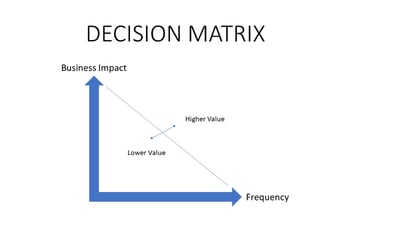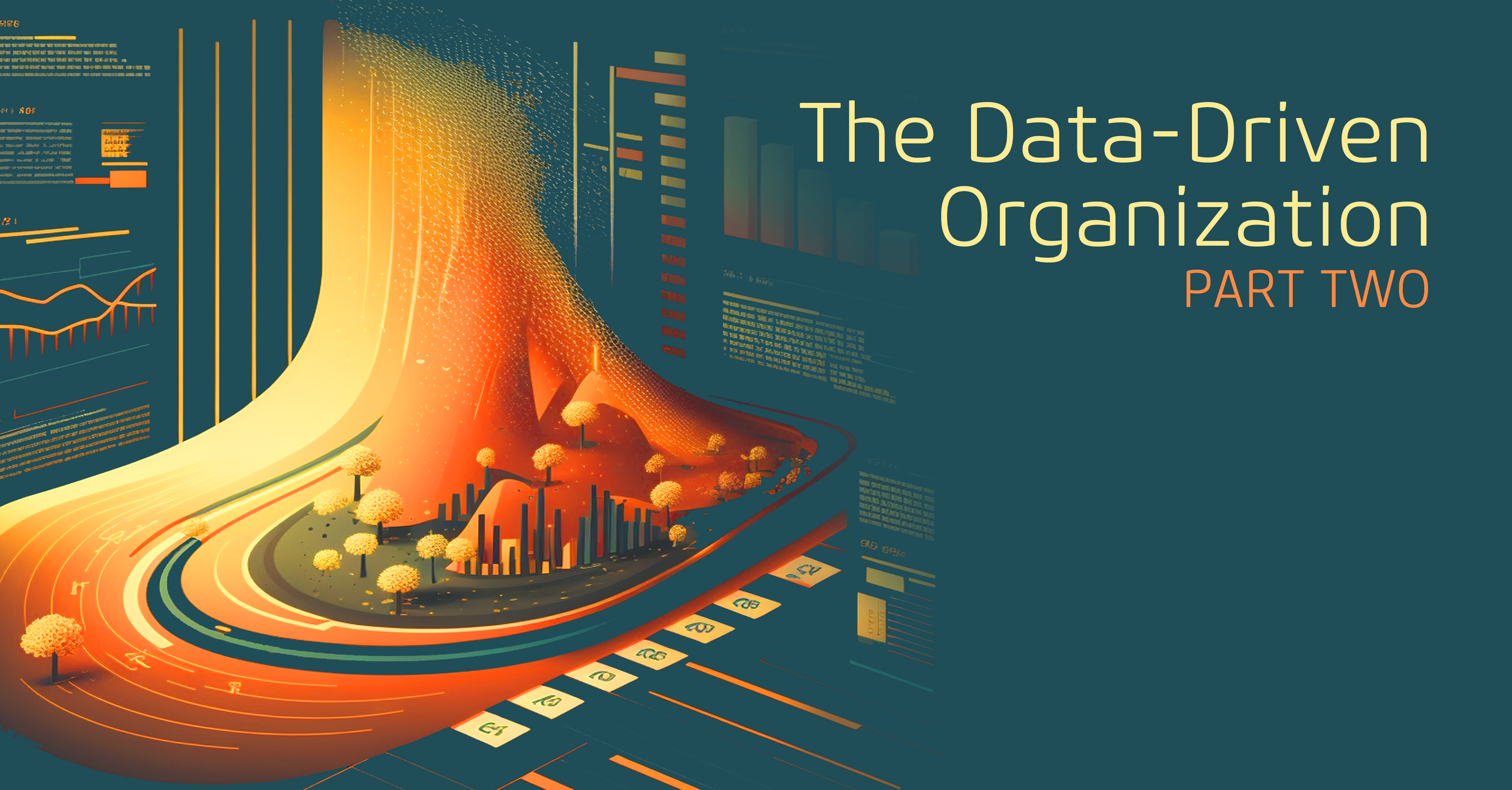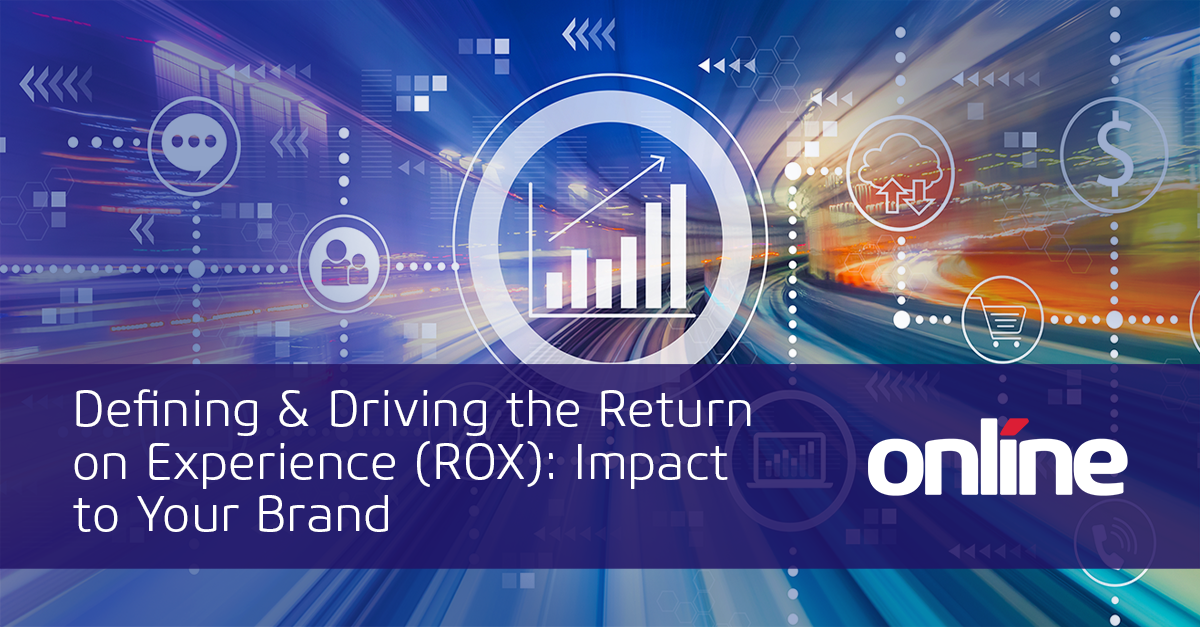Jeff Friesen
In Part One of this blog, we discussed the rising importance of Generative AI (Gen AI) and its role in propelling data and AI to the forefront of organizational strategy. It emphasized that becoming a data-driven organization, which involves making decisions based on precise, real-time data, is increasingly attainable.
In Part Two, we acknowledge our place in this era of data-driven decision-making—where every choice should be backed by solid data, analytics, and actionable insights. From enhancing profitability and customer satisfaction to streamlining operations and fueling innovation, the impact of data is profound and pervasive. However, the journey to becoming a truly data-driven organization is fraught with challenges, including the need to understand which data matters most and how to use it effectively.
Maximizing Decision Value
The more times a decision is made, the more valuable the information used to make the decision becomes. As an analogy, the value of different decisions can be compared using a simple decision matrix:

The decisions with the highest value will have the greatest impact each time the decision is made, which is expanded by the amount of times that decision is made. Business impact is defined by the impact of a decision on its related KPI.
Every decision use case will have a cost associated with the data and analytics (data products) required to produce the information to support it given the organization's current people, process, technology, and data investments. A feasibility assessment that combines the increased business value of making the decision with information as well as the cost of the solution will identify the highest value use cases.
The value created will ultimately lead to increased revenue or decreased cost in the organization, however information use cases can be divided into five common different decision categories:
Five Decision Categories
Understanding the spectrum of decision-making is pivotal for harnessing the full potential of your data. Our framework categorizes business decisions into five distinct areas, each tailored to different goals.

1. MAXIMIZE PROFIT
This includes any data product that supports a decision that will directly increase revenue or decrease costs.
Describing all potential use cases is much more complex than can fit into this article, however examples of revenue increasing decisions and an example of data products that support them include:
- Which sales opportunities should be focused on that have the highest value? (Sales Performance Dashboards)
- Which ad will the customer most likely click on? (Ad Targeting Models)
- Which promotion will be the most effective at which store? (Geo-Targeted Marketing)
- Which customers require intervention to reduce churn and increase lifetime value? (Customer Retention Dashboards)
Cost-reducing decisions and the data products that support them include:
- Which customer is being fraudulent? (Fraud Detection and Prevention models)
- Which machines require maintenance and when? (Predictive Maintenance Models)
- When should which products be available for customers? (Inventory Optimization models)
- Which expense outliers are inappropriate? (Expense Tracking Models)
- How can assets be more fully utilized? (Asset Utilization Dashboards)
- What are the organization’s greatest risks and what can be done to mitigate them? (General Risk Management Data Products)

2. FOCUS ON CUSTOMERS
Businesses exist to serve the needs of customers. Data sourced from customer engagement tools can lead to decisions that optimize the customer experience.
Better understanding of customers can lead to improved customer satisfaction, retention, and increased sales.
Examples of decisions and data products include:
- Which types of customers will respond to which products?
(Customer Segmentation Models) - Which customers should be prioritized for acquisition?
(Customer Lifetime Value Prediction) - How can the customer experience be improved?
(Voice of the Customer Analytics)
Internal customer satisfaction can also play an important role in employee retention, absenteeism, and productivity. Employee Engagement Analytics, Performance Management Dashboards, and Salary and Compensation Benchmarking Information can support decisions related how to build and retain high performing, engaged teams.

3. ELEVATE PRODUCTS & SERVICES
Insights into consumer behavior and preferences facilitate targeted decision-making. From development of products to positioning and pricing, decisions that improve products or services support delivery of a brand experience that can increase sales or reduce costs.
Examples include:
- Which features should be created, enhanced, or removed?
(Product Adoption and Usage Tracking) - Which products require quality improvements?
(Service Request Management Dashboard) - What can be done to improve the customer experience?
(Customer Feedback Dashboard)

4. STREAMLINE OPERATIONS
Operations focuses on efficient and effective processes in the organization, driven by Enterprise Performance Management. These processes could be internal to Data Management and Analytics teams, or external to any other team in the business.
Internally to data management, any solution that reduces technical debt or produces a data product with less effort falls into the operations category. For any other team, a reduction of manual aggregation of information (e.g. spreadsheet usage), reduced organizational waste, higher productivity, and increased quality of processes all have value. Additionally, prompt responses to legal or regulatory issues can reduce fines.
Examples of decisions and data products used by business teams in their operations include:
- Where can manual aggregation of information be eliminated?
(Automated Reports or Dashboards) - How can bottlenecks in the process be reduced?
(Process Mining Analytics) - Which decision should be made next in the process?
(Real-Time Analytics) - Which KPI's are out of control or outside of target and require investigation? (Performance Dashboards or control charts)
5. FUEL INNOVATION
Information can be a powerful catalyst for innovation. It can be used to support business case development. It can also be used to drive competitive advantage by creating cost leadership, creating uniquely desirable products and services, or offering a specialized service in a niche market.
Examples include:
- What are the current emerging opportunities, customer preferences, or market gaps (Market Research and Trend Analysis)
- Is our time-to-market, R&D Spending, and patent activity appropriate? (Innovation Metrics Dashboard)
- Which new products are customers likely to want? (Machine Learning Customer Preferences Model)
The Path to Data-Driven Excellence
Identifying an organization's highest value and lowest cost data driven decisions requires creativity and collaboration. Business users bring to the table their process knowledge, while IT representatives need to quantify the costs involved in producing and maintaining the data products required.
The data-driven organization rallies around its business decisions. The starting point is this:
- What are the key business objectives or processes and their key performance indicators?
- What critical decisions are made within these processes?
- Is the business using information to make these decisions?
Everything flows backwards from there. To minimize unnecessary data storage, report generation, and model creation, a decision pull system is needed. If knowledge workers are not using information to make their decisions, why not?
- Are they aware of data driven best practices in all of their functional units?
- Are they rewarded for making faster and higher quality decisions?
- Do all employees have the necessary dashboards and machine learning models available to them?
- Do they know how to ingest the information, and trust the information they’re receiving?
- Do they have support if they need help?
If the knowledge workers are data literate, have data-driven processes in place, are supported in using information, and are demanding of information that they’re not receiving, then the bottleneck in the decision value chain is further upstream in analytics or reporting, or data ingestion. If any of these conditions is not in place, the bottleneck of the decision value chain may be decision making itself.
Efficient analysis of an organization’s business decisions starts at the highest level and then drills down deeper into problem areas. Building a heat map of the business’s objectives and processes and the KPIs used to measure them can highlight areas where poor decision making due to a lack of information, or intuition-based decision making, has the highest impact.
The following is an example of a heat map for an insurance company of the cost of intuition-based decision making on its key performance indicators for its highest priority business objectives.

KPIs that have the greatest deviation due to a lack of data driven decision making and have the lowest cost to produce that information required will be red. KPIs in red are not performing up to their potential given current or potentially available data.
KPIs that are performing well, that are either using all information available, or the cost to produce new information is prohibitive will be green. That is to say, the decisions that impact those KPIs are being made to the greatest of their potential given current or potentially available data.
The company’s Target Operating Model and Data Strategy can be built considering the results of this heat map. The DAMA wheel provides a framework within which to define data initiatives that will improve decision making. With a knowledge of the highest value decision use cases, data pipelines can be augmented to produce data products that focus on addressing sub-optimal key performance indicators.
Data Governance can focus its oversight on high value data. The decisions being made and the precision of the information required to make them can define which columns in all tables have the most impact on business value and how to focus efforts of the data quality program. Roles, automation, and AI can be optimized to provide the right information to the right decision maker with the least amount of effort.
Take the Data-Driven Leap
In the fast-paced landscape of today's business world, strategic planning and data-driven decision-making have become paramount for executive leadership. To achieve sustainable business growth, it's essential to harness the power of data to maximize ROI, gain a competitive advantage, and improve financial performance. Our data-driven assessment and strategy services are tailored to your specific needs, helping you identify opportunities, enhance decision making, and optimize key performance indicators.
Don't miss out on the transformative potential of data.
Take the first step towards unlocking your organization's true data-driven potential. Reach out to us today for a comprehensive data-driven assessment that can elevate your market analysis, enhance your competitive advantage, and drive tangible results.
Let's collaborate to drive your business forward with informed decisions and measurable success!
About the Author
 Jeff Friesen, P.Eng, MBA, PMP, CBAP, CDMP, began his career as an engineer back in 2004. Since then, he has become a Principal Consultant at Online Business Systems. He has led significant projects in data management, process improvement, and systems architecture, contributing to business excellence across various industries. Jeff's leadership in developing data pipelines, facilitating team success, and his commitment to continuous improvement underscore his ability to drive data-driven business performance and innovation.
Jeff Friesen, P.Eng, MBA, PMP, CBAP, CDMP, began his career as an engineer back in 2004. Since then, he has become a Principal Consultant at Online Business Systems. He has led significant projects in data management, process improvement, and systems architecture, contributing to business excellence across various industries. Jeff's leadership in developing data pipelines, facilitating team success, and his commitment to continuous improvement underscore his ability to drive data-driven business performance and innovation.





Submit a Comment